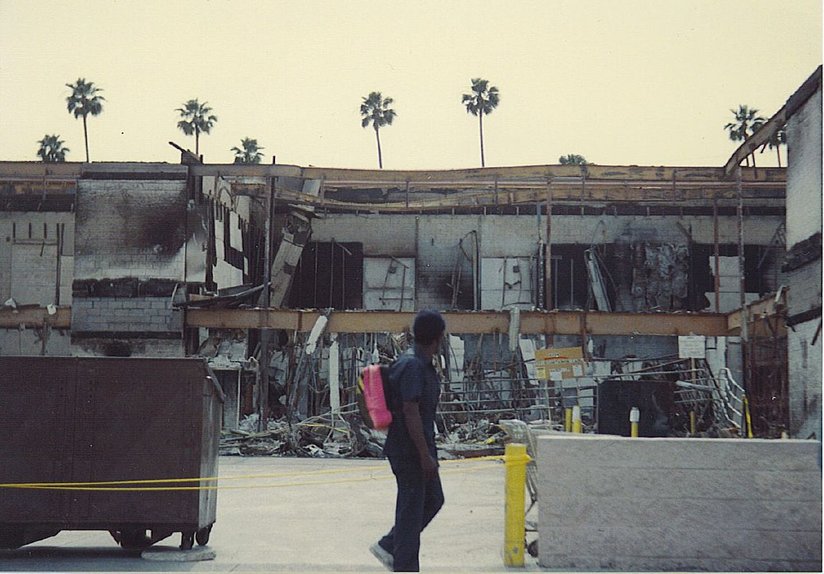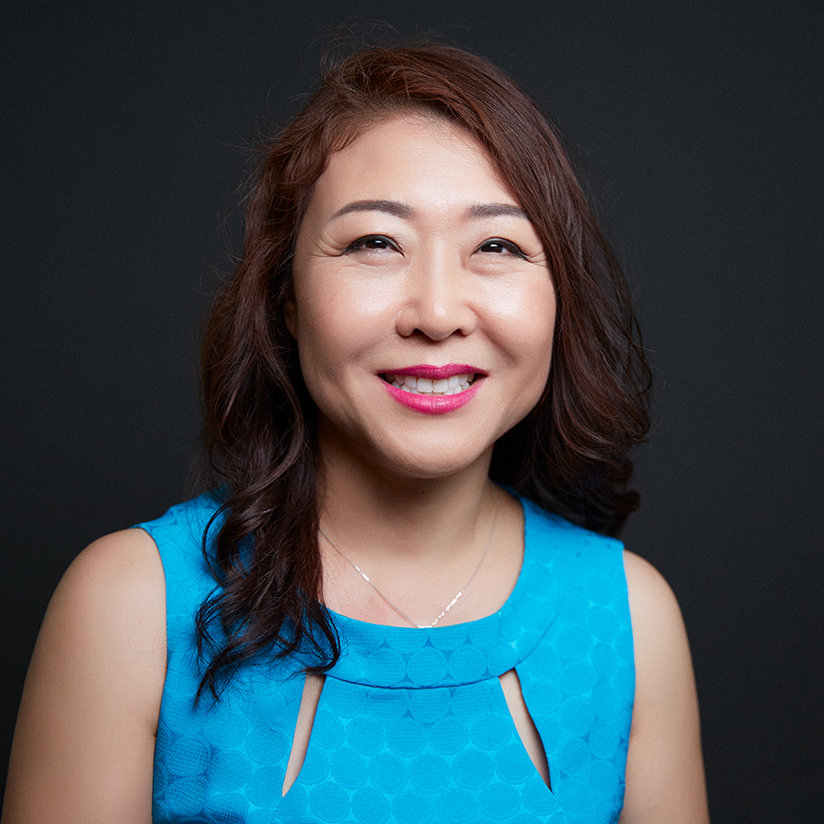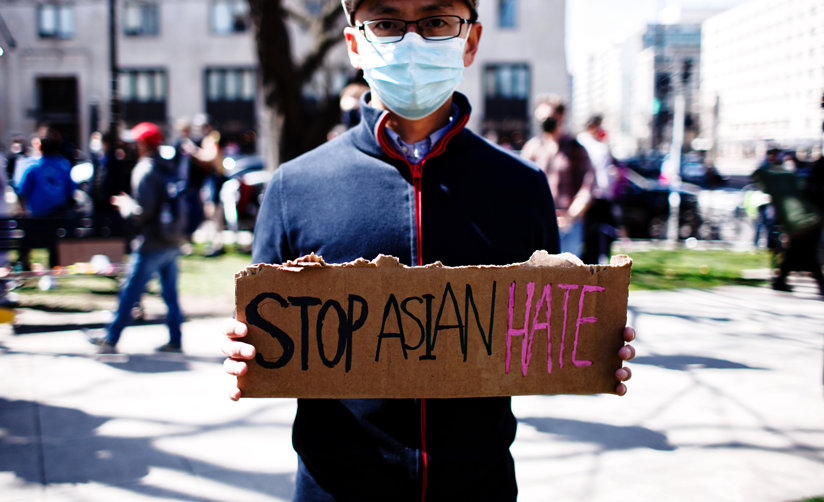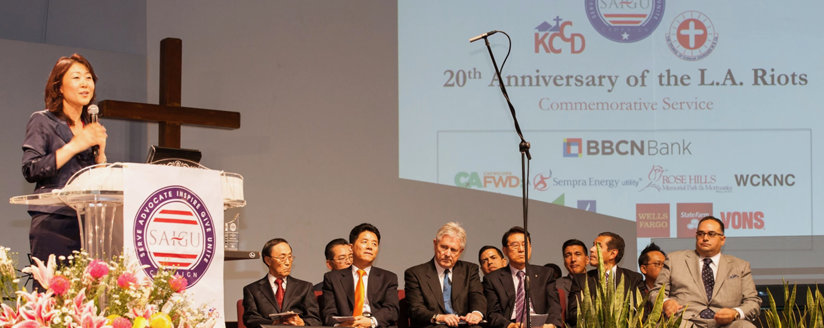Spotlighting a Hero This Saigu: How Hyepin Im Uplifts Her Community in the Face of Hate
Saigu means 4/29 in Korean.
On that date, April 29, 1992, Los Angeles exploded with riots following the not-guilty verdict of four white Los Angeles police officers who had been caught on video beating a Black man, Rodney King. Clouds shrouded the city as the six days of rioting saw more than 50 dead, some $1 billion in damages, and 3,000 businesses ransacked or utterly destroyed—nearly half of which were Korean-owned.

The havoc and devastation profoundly affected Hyepin Im, a Korean MBA student at USC.
“In the wake of the L.A. riots, I felt the injustice of these hard-working Korean business owners and families who were being portrayed negatively and unfairly. Instead of receiving help, they were re-victimized after their stores were burned. But they were also the victims of daily assaults, shoplifting, violence, and racism, and to then be portrayed in such a negative light—the constant bombardment of attacks in the subsequent period was heartbreaking. The storeowners could not articulate well for themselves; for the most part, there were no friends who were speaking for our community, and there weren’t able representatives and spokespersons for us.”
Hyepin Im is the founder of the nonprofit Faith and Community Empowerment (FACE) which strives, as she puts it, “to bring the face of God through service and lift those who are faceless.” By using faith, community partnerships, business know-how, and a lot of elbow grease, FACE has trained over 5,000 faith leaders on community development skills, helped over 12,000 individuals and families achieve home ownership, rescued $92 million in mortgages from foreclosure, assisted in securing over 400,000 subgrants to faith-based and community organizations, granted $1.8 million in down-payment assistance for families and individuals, and partnered with over 800 organizations from Fortune 500 companies to the White House.

A preacher’s daughter, Ms. Im expanded her education by connecting with other mentors and communities outside her parents’ church, learning more ways to serve. She was impacted by the example of Reverend Cecil Murray and the African Methodist Episcopal Church. “They were doing the very same works that my parents were doing—helping people with jobs and houses—but the difference was they had created affiliated nonprofits and could partner with the broader community. There were resources they could tap into. But more than that: the Church’s reputation grew, it was perceived as a valued contributing stakeholder in the community, and when important decisions were made, they were being invited to those rooms.”
Realizing this model created a vested interest on the part of the community in the Church’s success, Im took the paradigm and ran with it. The result? As she puts it, “We have created a lot of miracles, leveraging the power of churches, warm bodies, good hearts, facilities, individuals wanting to make a difference in the world, and partnering with corporate America, universities and nonprofits. You can do so much more with others. Even if you can do it yourself, it’s always smarter and more strategic to work together.”
“We are fighting so that we can have the same kind of opportunities to reach our full potential, shine our light, and bless and contribute to this country.”
Im has been active in faith-based civic affairs, served on international boards and, in 2013, was named one of the Ten Most Inspiring Women by Los Angeles magazine. Yet with all her activity and success, her greatest challenge remains a persistently wrong perception of the Asian community in America. “When people talk about who has needs in this country, they usually talk about the black and the brown, and the Asian community is left out wholesale. People consider us a minority only when it hurts us, but not when it would be to our benefit.”
The myth goes that Asian Americans know how to behave: “They work hard, don’t protest, and they keep their heads down. And look how well they’re doing—why, they’re doing just as well, if not better—income-wise, education-wise, job-wise—than any white person.”
This falsehood, otherwise known as the myth of “The Model Minority,” is a stigma—a damning laced with faint praise that is employed by white supremacists in the media and elsewhere. Bigots and those hoodwinked by them use the myth to denigrate and diminish the activism of Blacks, indigenous peoples, and others, while at the same time conveniently camouflaging their white supremacy: “There’s no racism here—if you would only work hard and stop causing a fuss—just look at the Asians.”

A simple review of statistics easily punctures the myth. Firstly, proponents of the myth like to say that the household income statistics of Asian Americans taken as a whole compare favorably with those of white families. But use of household income as a marker obscures the fact that many Asian American families have larger households with more adults who are employed than white families.
Secondly, while some Asian American ethnic groups may be doing relatively well, many are not doing well compared to the rest of the U.S. population. For instance, the annual household income of Cambodian Americans averages about $10,000 or less, and over 90 percent of that demographic does not have a bachelor’s degree, significantly lower than the comparable statistics for the U.S. overall ($21,587 per capita income and 76 percent without a bachelor’s degree). Thirdly, Asian Americans make up a disproportionately high percentage of those living in poverty. Some 12 percent of Asian Americans live below the poverty line, compared to 8 percent of whites. Asian Americans are also uninsured at a higher rate than whites (18 percent vs. 11 percent). Stressing those Asian Americans who’ve “made it” only furthers the myth and makes the large percent who are struggling invisible.
The idea is to understand and heal. Hyepin Im will be at the center of it all, spreading her message of love and cooperation.
But most insidious of all is that the Model Minority Myth has failed to protect Asian Americans from hate-inspired violence, as the ever-mounting grim statistics attest.
According to a recent report to the United Nations, “Racially motivated violence and other incidents against Asian Americans have reached an alarming level across the United States since the outbreak of COVID-19. Chinese Americans and other Asian Americans, including individuals of Korean, Japanese, Vietnamese, Filipino, and Burmese descent, have been subject to racist, xenophobic attacks… Attacks included physical assaults, vandalism, verbal harassment, denial of access to services and public spaces. Reportedly, victims experienced being spat on, blocked from public transportation, discriminated against in workplaces, shunned, beaten, stabbed, and insulted as transmitters of the coronavirus. Women were reportedly harassed more than twice [as often as] men.”
“The Model Minority Myth robs us of solidarity with other communities of color,” Ms. Im says. “It robs us of investments that our community needs as well. On multiple levels, we are fighting so that we can have the same kind of opportunities to reach our full potential, shine our light, and bless and contribute to this country. Part of the work that I have been doing is to combat the Model Minority Myth. We’re in the same boat, whether it’s housing discrimination, immigration or anything else.”
In an interview in 2017, Ms. Im mentioned that divisive rhetoric was getting worse and that she feared it would have a more negative effect on the Asian American and Pacific Islander community—a statement that has been prophetic, with over 9,000 incidents of anti-Asian hate since March of 2020.

Instead of responding to the hate in kind, Im has resisted the invitation to strike back with venom. Instead, she says, “Part of my motivation was the idea: You know what? I’m going to do my best to ensure our narrative has its rightful place in history—that we aren’t demonized or marginalized, but that we have an accurate portrayal.”
This week is the 30th anniversary of Saigu, which will be marked by a series of events in solidarity and unity cosponsored by leaders of the Korean American and Black communities of Los Angeles. The idea is to understand and heal. Hyepin Im will be at the center of it all, spreading her message of love and cooperation. Her nonprofit, FACE, with the support of Mayor Eric Garcetti and other city officials, has already been spearheading a month-long Saigu campaign involving film screenings, art exhibits, and symposiums on subjects like how to create and foster multicultural, anti-racist faith communities.
“I’ve learned how to shine my light by fostering partnerships and relationships,” Ms. Im says. “How do you live peacefully? How do you share God’s love? That is what has the best chance.”
Scientology Founder L. Ron Hubbard famously wrote: “A primary trap is to succumb to invitations to hate.” Hyepin Im has helped heal and empower the many on their journey to spiritual, communal and personal fulfillment by refusing to succumb to those invitations and persisting in shining her light instead.










